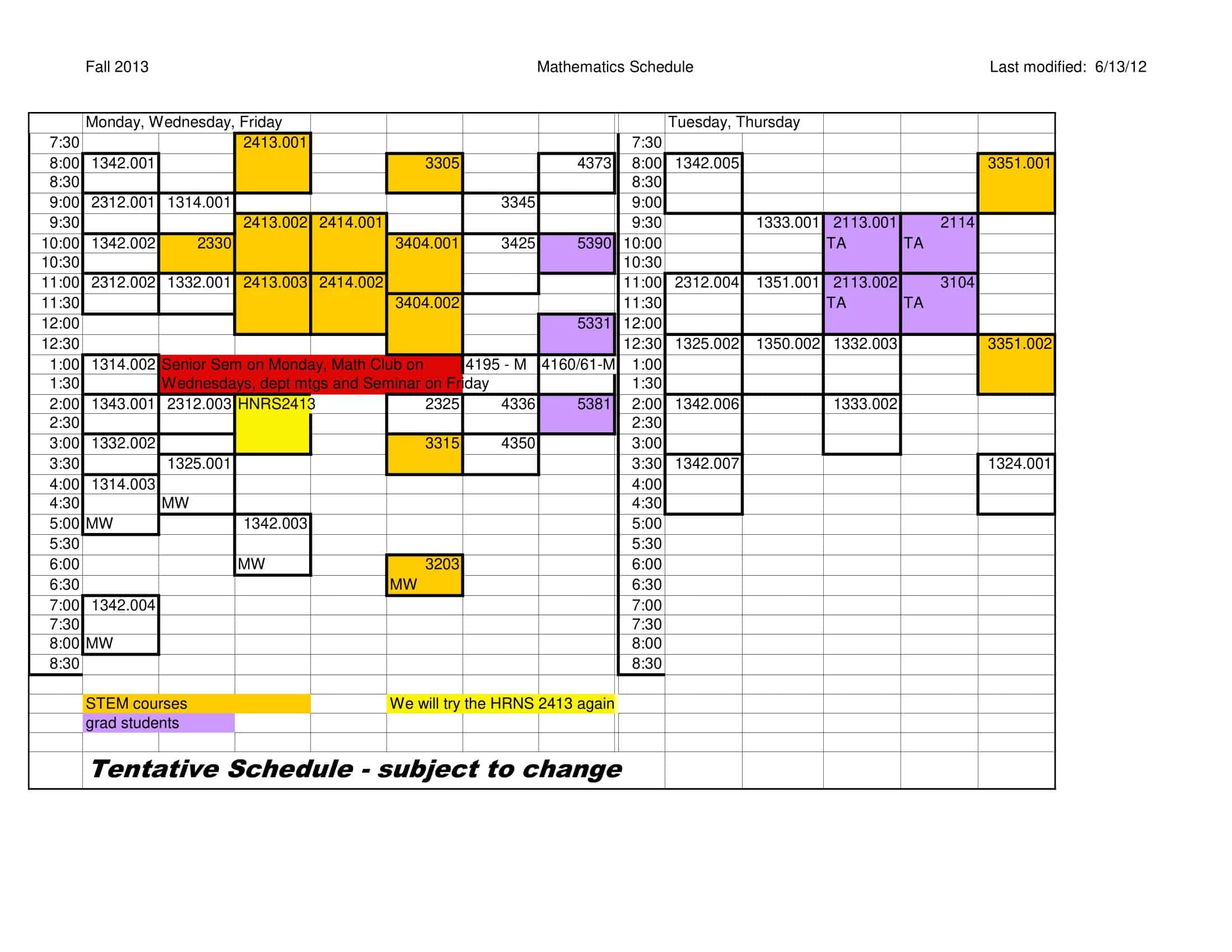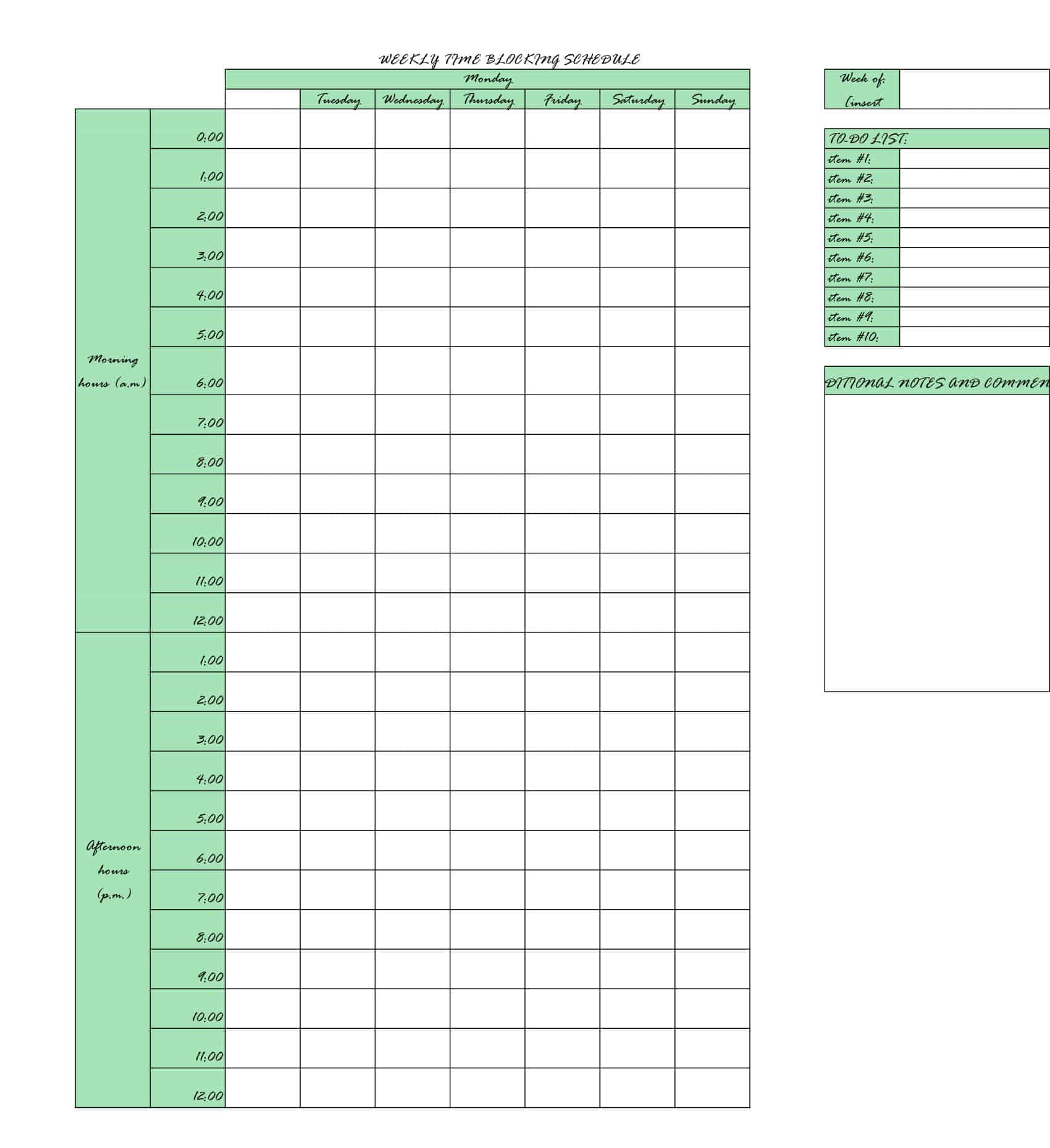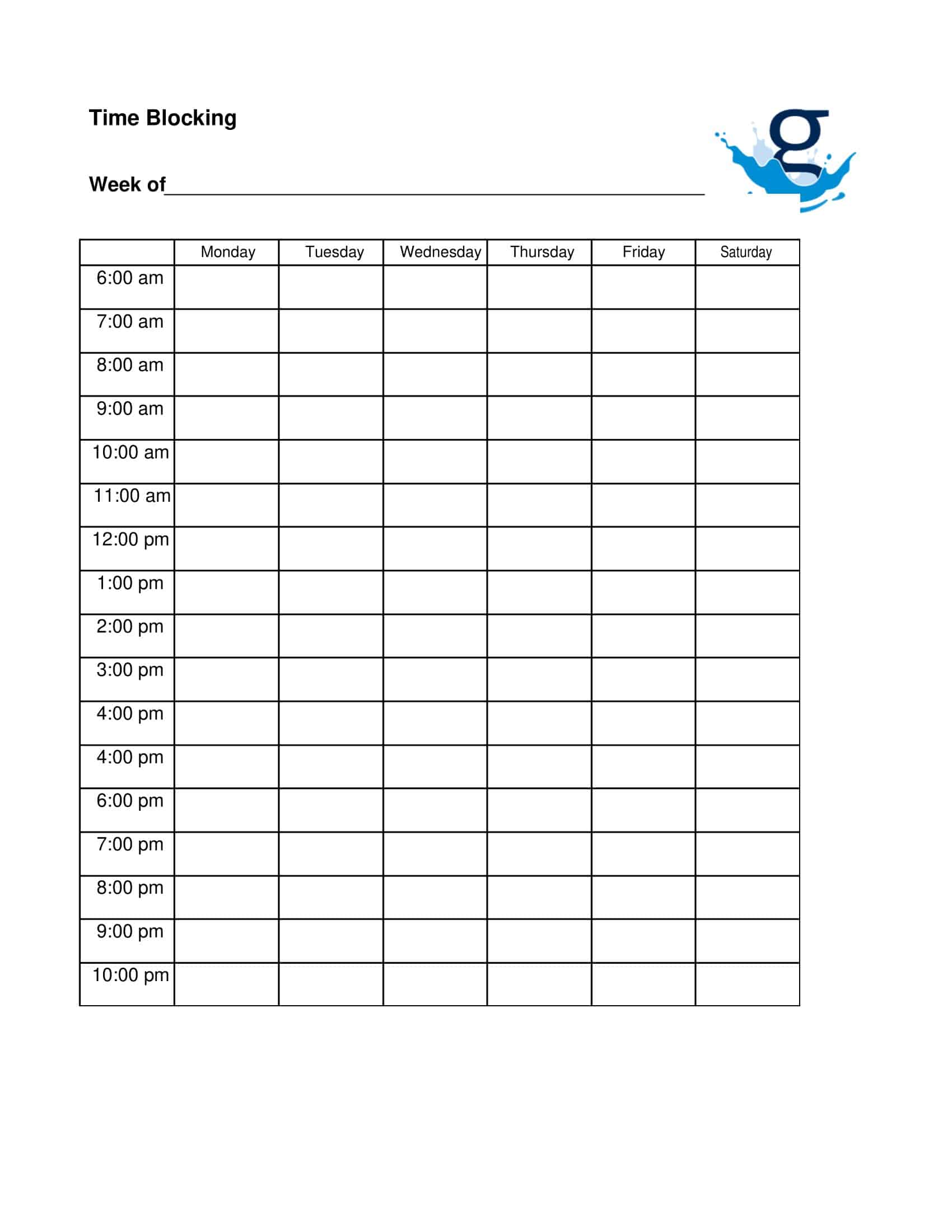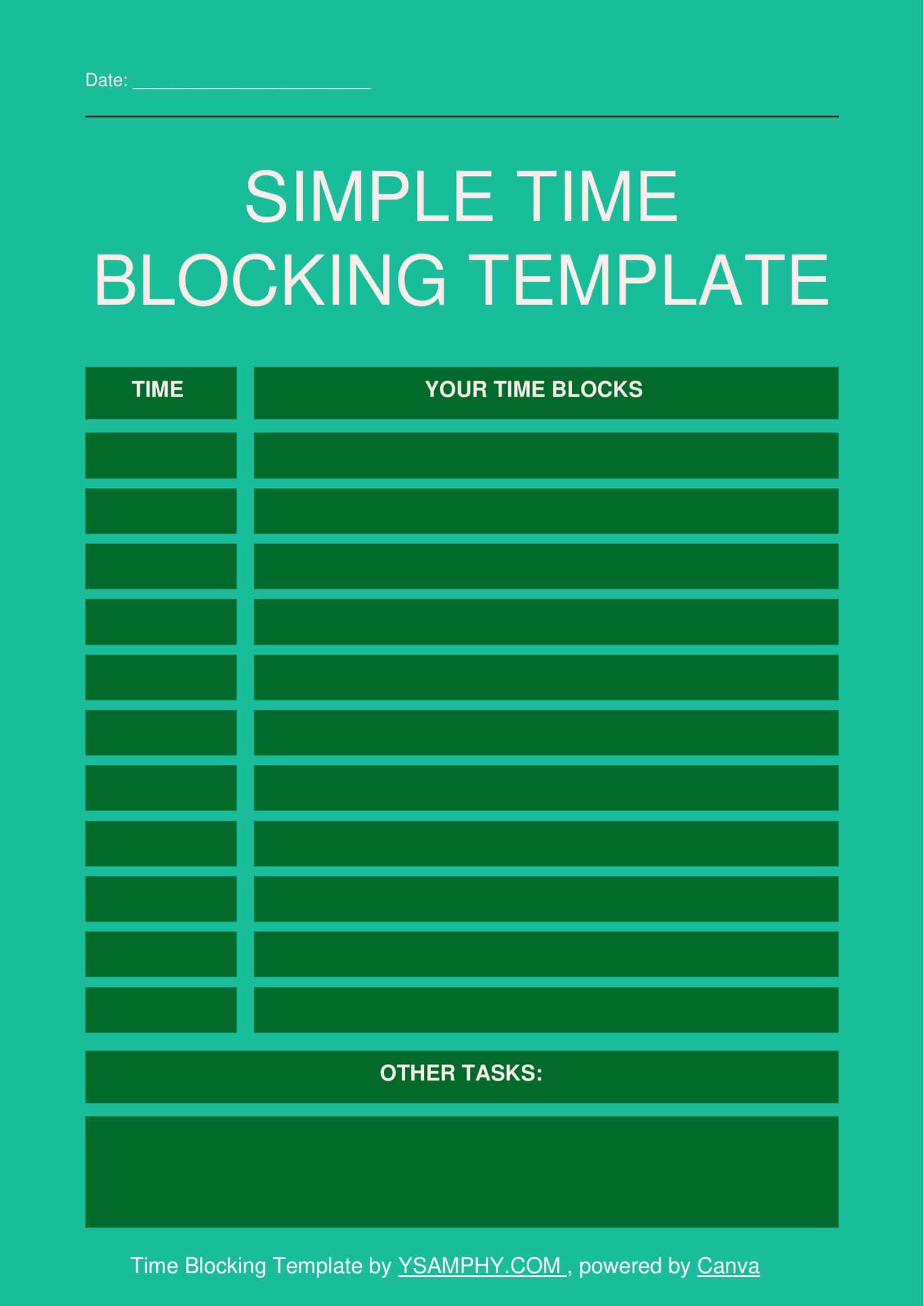Time blocking is a popular productivity technique that involves dividing your day into specific blocks of time and dedicating each block to a specific task or set of tasks. By breaking your day into smaller chunks, you can increase your focus and accomplish more in less time.
This technique is particularly useful for those who struggle with staying on task or managing their time effectively. In this article, we will explore the benefits of time blocking and provide tips and strategies for implementing it in your daily routine.
Table of Contents
The Advantages and Disadvantages of Time Blocking

Time blocking is a popular productivity technique that involves dividing your day into specific blocks of time and dedicating each block to a specific task or set of tasks. The idea behind this technique is that by breaking your day into smaller chunks, you can increase your focus and accomplish more in less time.
This method is particularly useful for those who struggle with staying on task or managing their time effectively. However, like any technique, time blocking has its advantages and disadvantages. In this article, we will explore the benefits and drawbacks of time blocking and provide tips and strategies for implementing it in your daily routine.
Time Blocking Templates
Maximize productivity and effectively manage your time with our comprehensive collection of Time Blocking Templates. Time blocking is a time management technique that involves scheduling dedicated blocks of time for specific tasks, activities, or goals. Our customizable and printable templates provide a structured framework for planning and organizing your day, week, or month, allowing you to allocate time for important priorities, minimize distractions, and maintain focus.
Whether you’re a student, professional, or entrepreneur, our templates offer various layouts and designs to suit your needs. By utilizing our Time Blocking Templates, you can enhance productivity, improve time management skills, and achieve a better work-life balance. With visually appealing designs and user-friendly layouts, our templates help you optimize your time, increase efficiency, and make the most out of each day. Take control of your schedule, accomplish more, and enjoy greater success with our user-friendly Time Blocking Templates. Download now and unlock the power of effective time management.
Advantages of Time Blocking
Increased Productivity: One of the main benefits of time blocking is that it can help you increase your productivity. By dedicating specific blocks of time to specific tasks, you can stay focused and avoid distractions. This can help you accomplish more in less time and achieve your goals more quickly.
Better Time Management: Time blocking can also help you better manage your time. By breaking your day into smaller chunks, you can see where your time is going and make adjustments as needed. This can help you avoid procrastination and prioritize your tasks more effectively.
Greater Sense of Control: Time blocking can also give you a greater sense of control over your day. When you know what you need to accomplish and when, you can feel more in control of your time and less stressed.
Improved Work-Life Balance: Time blocking can also help you maintain a better work-life balance. By setting aside specific blocks of time for work, you can ensure that you have time for other important aspects of your life such as family, friends, and hobbies.
Greater Focus: One of the key advantages of time blocking is that it can help you focus better on the task at hand. When you know you only have a certain amount of time to complete a task, you are more likely to focus on it and get it done quickly.
Disadvantages of Time Blocking
Rigidity: One of the main drawbacks of time blocking is that it can be quite rigid. Once you’ve set your schedule for the day, it can be difficult to make changes or adjust your schedule as needed.
Inflexibility: Time blocking can also be inflexible. If something unexpected comes up, it can be challenging to fit it into your schedule without disrupting your entire day.
Stressful: Time blocking can also be stressful. If you’re not able to complete a task within the time block you’ve allocated for it, you may feel like you’ve failed or that you’re not productive enough.
Not Suitable for Everyone: Not everyone will find time blocking to be effective. Some people may find it too rigid, while others may find that it doesn’t work well with their particular work style.
Lack of Spontaneity: Finally, time blocking can also limit spontaneity. If you’ve scheduled every minute of your day, it can be difficult to take advantage of unexpected opportunities or to simply relax and enjoy the moment.
Tips and Strategies for Implementing Time Blocking
Start Small
If you’re new to time blocking, it’s important to start small. Try allocating 15-minute blocks of time for specific tasks and gradually increase the length of the blocks as you become more comfortable with the technique.
Be Realistic
When setting your schedule, be realistic about how much time you need to complete a task. It’s better to overestimate the time needed than to underestimate it.
Prioritize Tasks
When allocating blocks of time, prioritize your tasks based on importance and urgency. This will help you stay focused on the most important tasks and ensure that they get done first.
Allow for Flexibility
While time blocking can be rigid, it’s important to allow for flexibility. Leave some blocks of time open for unexpected tasks or for relaxing and recharging.
Use a Timer
To stay on track, use a timer to keep track of the time for each block. This will help you stay focused and ensure that you’re making the most of your time.
Be Adaptive
Be adaptive and adjust your schedule as needed. If a task takes longer than expected or if something unexpected comes up, don’t be afraid to adjust your schedule accordingly.
Take Breaks
It’s important to take breaks and give yourself some time to relax and recharge. Schedule in short breaks between tasks or longer breaks during the day to help you stay refreshed and focused.
Review and Reflect
Review your schedule at the end of the day and reflect on how you used your time. Identify any areas where you could improve and make adjustments to your schedule accordingly.
Types of time blocking templates
The Pomodoro Technique
This type of time blocking involves breaking your day into 25-minute blocks of focused work, followed by a 5-minute break. This technique helps to increase focus and productivity by breaking up the day into shorter, more manageable blocks of time.
The Eisenhower Matrix
This type of time blocking involves categorizing tasks based on their importance and urgency and allocating specific blocks of time for each category. Tasks are divided into four categories: urgent and important, important but not urgent, urgent but not important, and not important or urgent.
The 90-Minute Method
This type of time blocking involves working in 90-minute blocks, followed by a short break. This method is based on the idea that our brains have a natural 90-minute cycle of productivity and rest.
The Time-Of-Day Method
This type of time blocking involves allocating specific blocks of time for specific tasks based on the time of day. For example, you might dedicate the first part of your day to more analytical and focused tasks and the second part of your day to more creative and flexible tasks.
The Hybrid Method
This type of time blocking involves combining different types of time blocking templates to best suit your needs and schedule. For example, you might use the Pomodoro Technique for focused work tasks and the Eisenhower Matrix for prioritizing tasks.
The “Deep Work” Method
This type of time blocking involves allocating specific blocks of time for deep, focused work that requires concentration and eliminates distractions. This method is particularly useful for tasks that require high-level thinking and creativity.
The “Batch Processing” Method
This type of time blocking involves grouping similar tasks together and completing them in batch. This method allows to increase focus and productivity by eliminating the need to switch between different tasks and contexts.
The “Multi-tasking” Method
This type of time blocking involves allocating time blocks for multitasking, where you work on multiple tasks simultaneously. This method is useful for completing smaller tasks and can be beneficial if done correctly and with a balance of focus on one task at a time.
The “Self-care” Method
This type of time blocking involves setting aside specific blocks of time for self-care activities such as exercise, meditation, or leisure activities. This method helps to balance the day and reduce stress, leading to a better focus and productivity.
The “Flexible” Method
This type of time blocking is more flexible and adaptable, it doesn’t have a strict schedule or a defined time frame, it is more like a reminder of what needs to be done rather than when it needs to be done. This method is useful for people who have a more dynamic schedule or for tasks that can be done at any time.
How do I make a block schedule?
Creating a block schedule involves several steps. Here is a detailed guide on how to make a block schedule:
Identify your goals
Before you start creating your schedule, it’s important to identify your goals. This will help you to prioritize your tasks and ensure that you’re spending your time on the most important things.
Create a list of tasks
Make a list of all the tasks that you need to complete. This includes both work-related tasks and personal tasks.
Prioritize your tasks
Categorize your tasks based on their importance and urgency. This will help you to focus on the most important tasks first and ensure that nothing falls through the cracks.
Determine the amount of time you have available
Take into account the amount of time you have available each day, including work hours, commuting time, and personal time.
Allocate time blocks
Allocate specific blocks of time for each task. Try to be realistic about how much time each task will take, and be sure to leave some flexibility in your schedule for unexpected tasks or emergencies.
Use a calendar
Use a calendar to schedule your tasks. This will help you to visualize your schedule and ensure that you’re staying on track. You can use a paper calendar, or an online calendar such as Google Calendar or Outlook.
Set reminders
Set reminders for each task so you don’t forget to complete it.
Be flexible
Be flexible and adapt your schedule as needed. If a task takes longer than expected or if something unexpected comes up, don’t be afraid to adjust your schedule accordingly.
Review and Reflect
Review your schedule at the end of the day and reflect on how you used your time. Identify any areas where you could improve and make adjustments to your schedule accordingly.
Stick to it
The most important step, stick to your schedule as much as possible. It may take some time to get used to it, but once you establish a routine, it will become second nature.
FAQs
How do you make a time block schedule?
To make a time block schedule, break your day into blocks of time representing your routines, obligations, and priorities. Assign activities to specific time slots to create a structured routine. Use a calendar, spreadsheet, or time blocking template to schedule blocks.
What is the time block format?
The standard time block format divides days into blocks of 30 minutes to 2 hours. Each block is labeled with the activity to be done during that time period. Blocks are organized chronologically and categorized by types of activities. Color coding helps differentiate blocks.
Is time blocking good for ADHD?
Yes, time blocking can be an effective scheduling method for managing ADHD symptoms. The structured routine and focus on specific tasks for set time periods helps minimize procrastination and wandering attention. It also reduces feeling overwhelmed.
What is the 5 time blocking method?
The 5 time blocking method divides the day into:
- Morning routine
- Creative work
- Meetings and appointments
- Emails and communications
- Evening routine
Key activities are assigned to the corresponding blocks.













































![Free Printable Food Diary Templates [Word, Excel, PDF] 1 Food Diary](https://www.typecalendar.com/wp-content/uploads/2023/05/Food-Diary-1-150x150.jpg 150w, https://www.typecalendar.com/wp-content/uploads/2023/05/Food-Diary-1-1200x1200.jpg 1200w)
![Free Printable Credit Card Authorization Form Templates [PDF, Word, Excel] 2 Credit Card Authorization Form](https://www.typecalendar.com/wp-content/uploads/2023/06/Credit-Card-Authorization-Form-150x150.jpg)
![Free Printable Stock Ledger Templates [Excel,PDF, Word] 3 Stock Ledger](https://www.typecalendar.com/wp-content/uploads/2023/08/Stock-Ledger-150x150.jpg)
